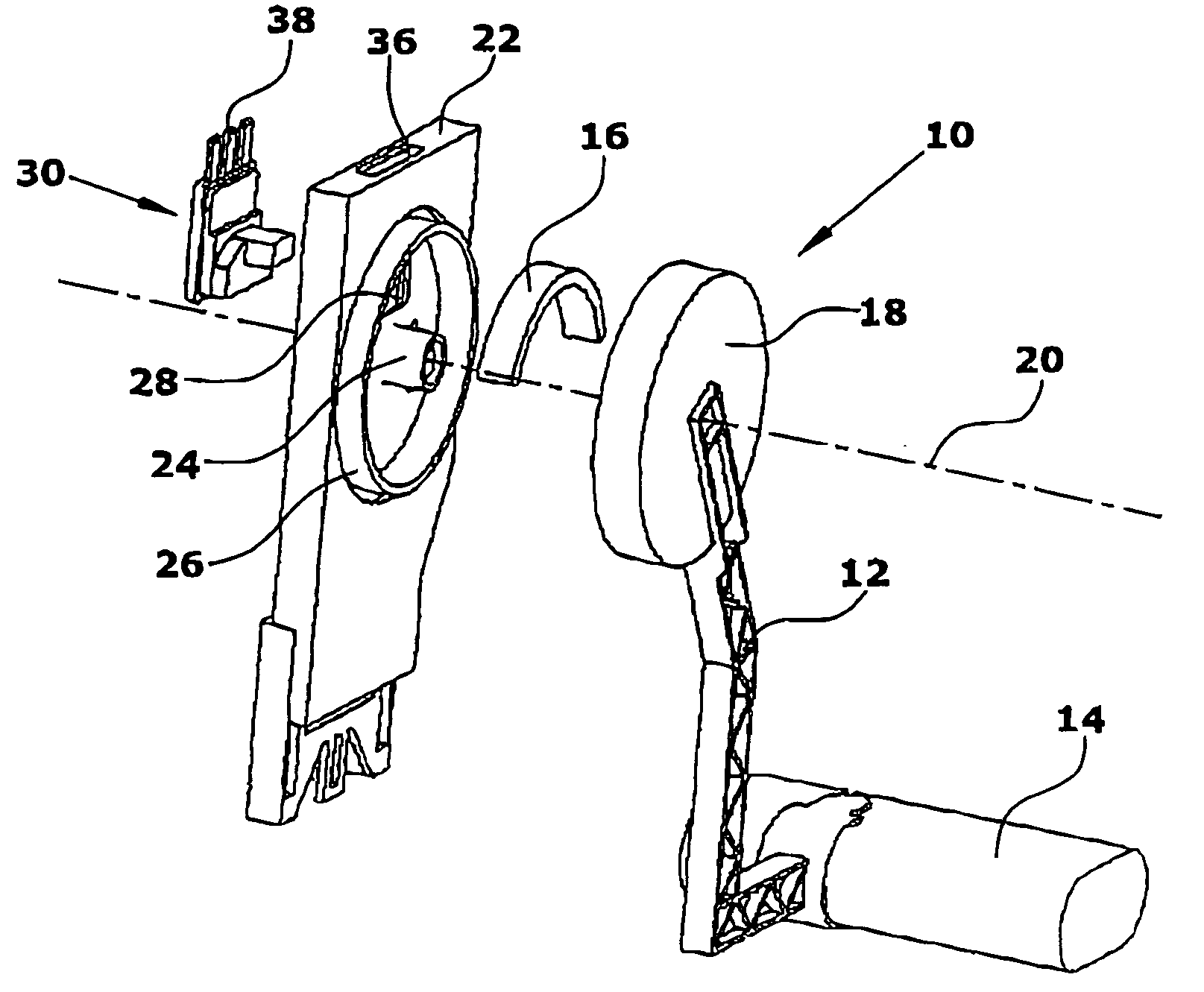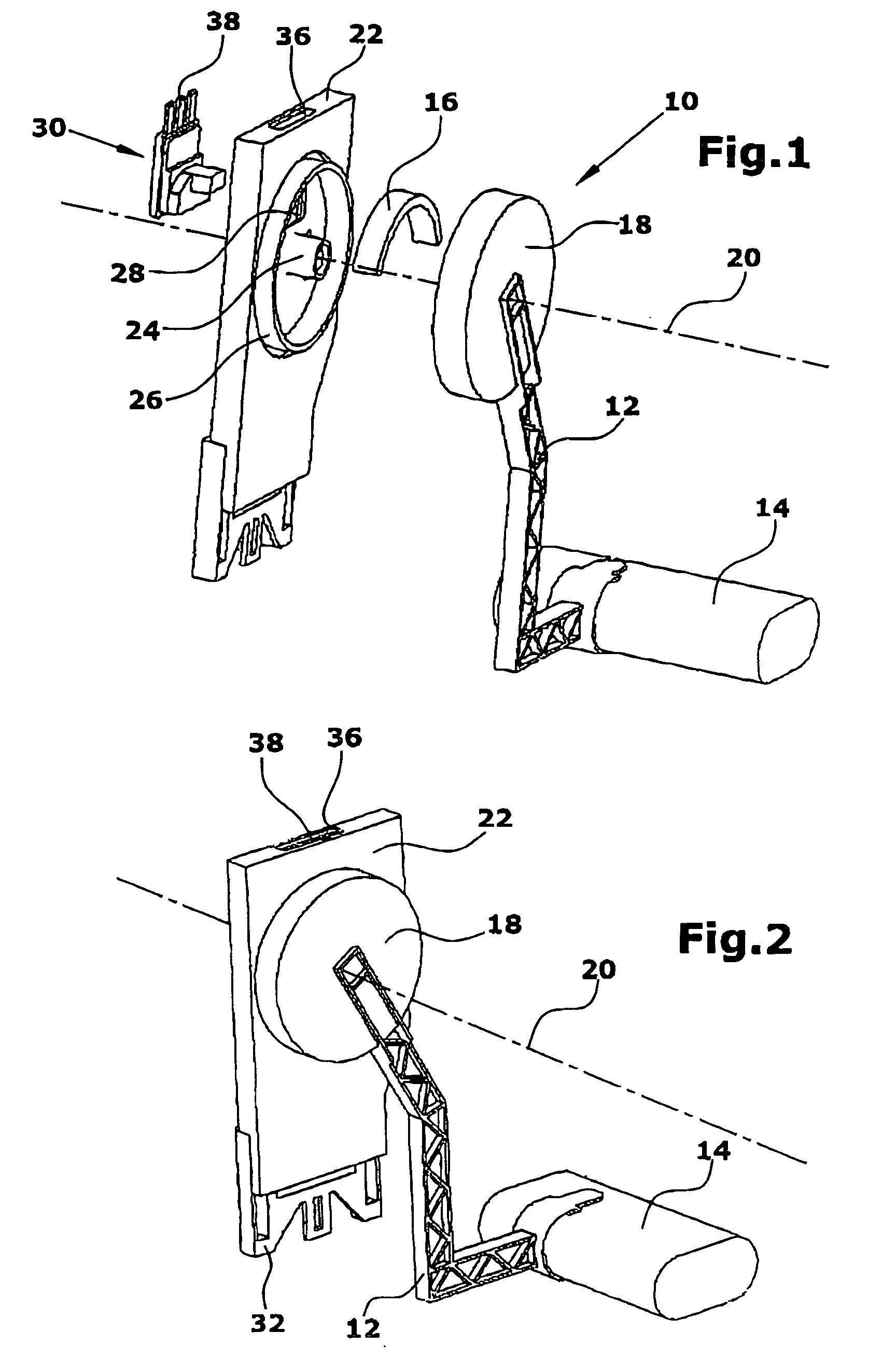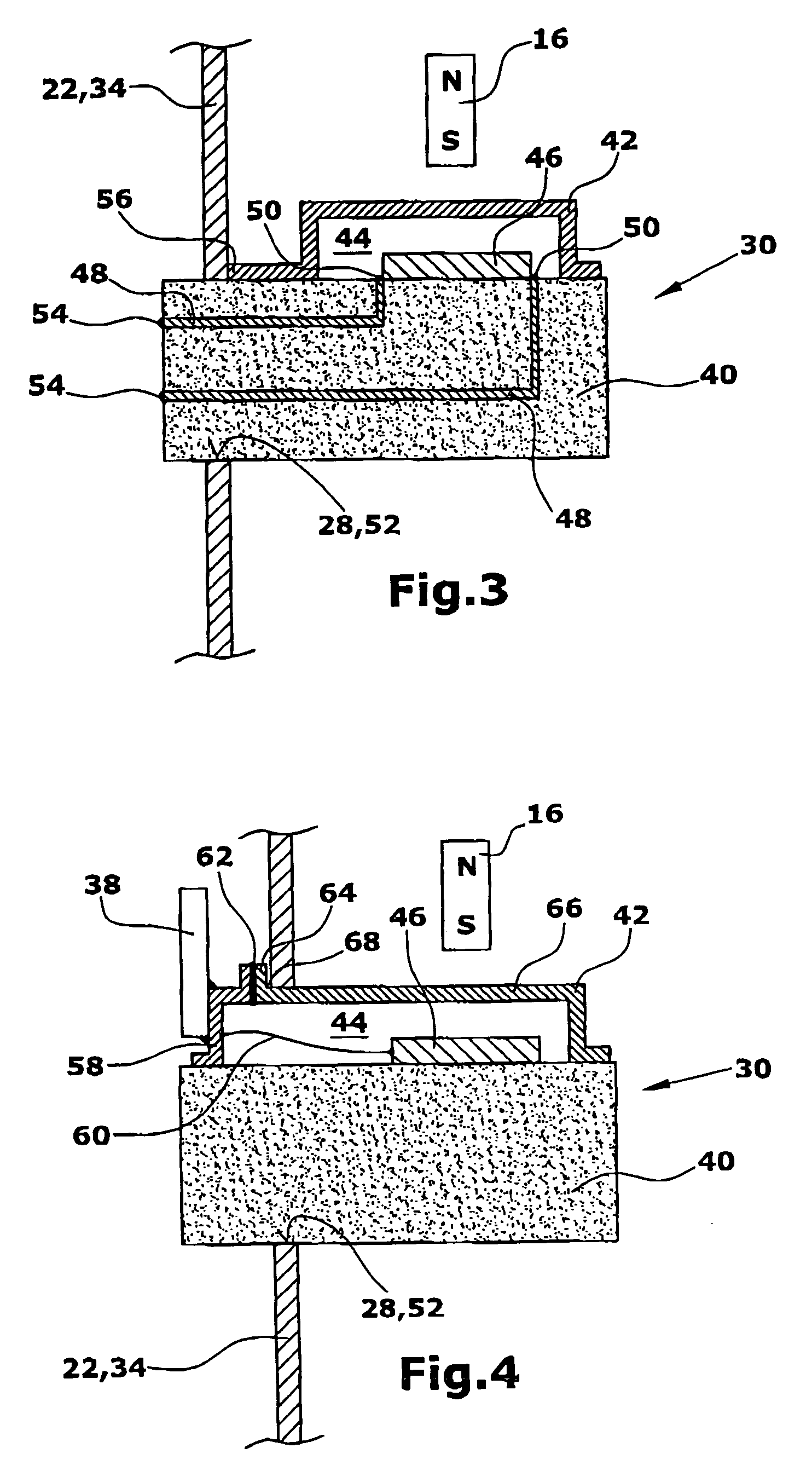Sensor element
a technology of sensor elements and elements, applied in the direction of magnetic measurements, liquid/fluent solid measurements, engine lubrication, etc., can solve the problems of insufficient protection of cast resin, difficult and expensive manufacture of complex geometries, and insufficient constructive efforts for protecting the sensor element. , to achieve the effect of simple configuration, high accuracy and measuremen
- Summary
- Abstract
- Description
- Claims
- Application Information
AI Technical Summary
Benefits of technology
Problems solved by technology
Method used
Image
Examples
first embodiment
[0032] In the sensor element 30 (FIG. 3) a metal cover element 42 is soldered to a base element 40. Inside an encapsulated space 44 formed by the base element 40 and the cover element 42 a detector element 46 is arranged. The detector element 46 may be a Hall effect element and / or an AMR sensor and / or a GMR sensor. The detector element 46 is placed onto the ceramic base element 40. The base element 40 comprises conductor conduits 48 which are connected via solder joints 50 with the detector element 46.
[0033] The sensor element 30 is arranged in an opening which may be the opening 28 of the intermediate piece 22 or a receiving opening 52 of the fuel tank 34.
[0034] The sensor element 30 is disposed in the opening 28 and / or the receiving opening 52 such that the detector element 46 is arranged inside the fuel tank 34. Thereby the conductor ends 54 of the conductor conduits 48 are arranged outside the fuel tank 34, whereby the conductor ends 54 can be soldered, outside the fuel tank 34...
second embodiment
[0035] In the Hall effect sensor element 30 (FIG. 4) the cover element 42 comprises contact elements 58 which are connected via electric conductors 60 with the detector element 46. Each contact element 58 is connected, for example by soldering, with an electric terminal 38. The contact elements 58 are insulated towards the remaining cover element 42 with the aid of an insulating means 62 such that short-circuits are prevented.
[0036] The cover element 42 comprises a projection 64 which is arranged at a right angle to a surface 66 of the cover element 42. Thus a right angle 68 is formed between the projection 64 and the surface 66. During assembly the sensor element 30 is inserted, in FIG. 4, from the left into the opening 28,52 such that the projection 64, acting as a stopper, limits the insertion depth. Due to the right angle 68 both the projection 64 and the surface 66 are, in the built-in condition, in contact with the intermediate piece 22 and / or the fuel tank 34.
third embodiment
[0037] In the sensor element 30 (FIG. 5) the sensor element 30 is provided with a cover capsule comprising the cover element 42 and a lid 70. The base element 40 is completely arranged inside the cover capsule. The cover element 42 comprises a nose 72 which is arranged at a distance to the bottom 74 of the cover element 42, which corresponds to the thickness of the base element 40. This allows the base element 40 to be connected, in a fixed positional arrangement, with the cover element such that soldering is not necessary. Accordingly, the lid 70 comprises a recess 76 which also corresponds to the thickness of the base element 40. The base element 40 is held by both the cover element 42 and the lid 70.
[0038] The lid 70 and the cover element 42 are preferably integrally connected with each other, in particular by soldering. To connect the detector element 46 with an evaluation unit and / or a voltage source, the lid 70 further comprises a connecting opening 78 through which the conduc...
PUM
 Login to View More
Login to View More Abstract
Description
Claims
Application Information
 Login to View More
Login to View More - R&D
- Intellectual Property
- Life Sciences
- Materials
- Tech Scout
- Unparalleled Data Quality
- Higher Quality Content
- 60% Fewer Hallucinations
Browse by: Latest US Patents, China's latest patents, Technical Efficacy Thesaurus, Application Domain, Technology Topic, Popular Technical Reports.
© 2025 PatSnap. All rights reserved.Legal|Privacy policy|Modern Slavery Act Transparency Statement|Sitemap|About US| Contact US: help@patsnap.com



